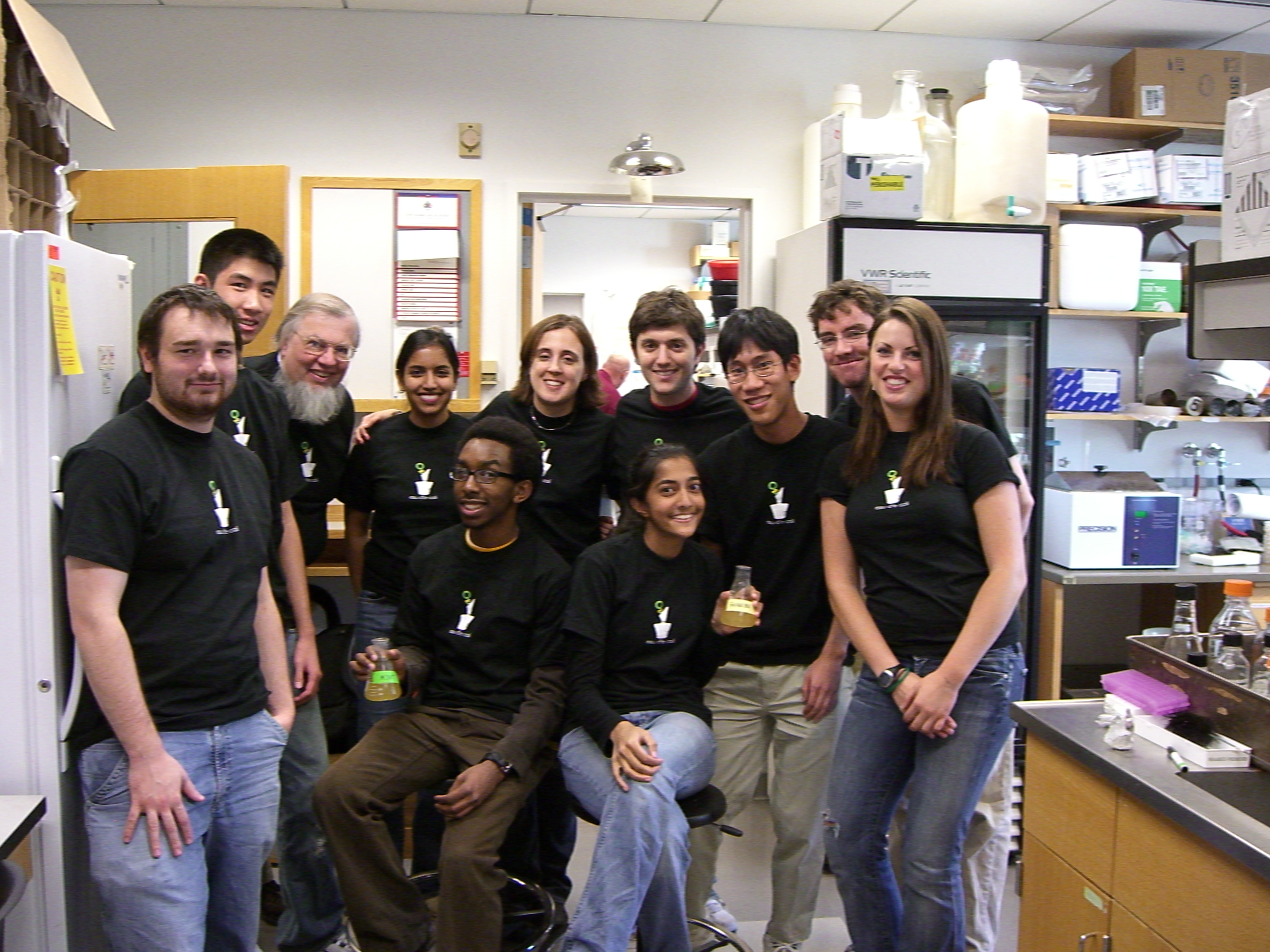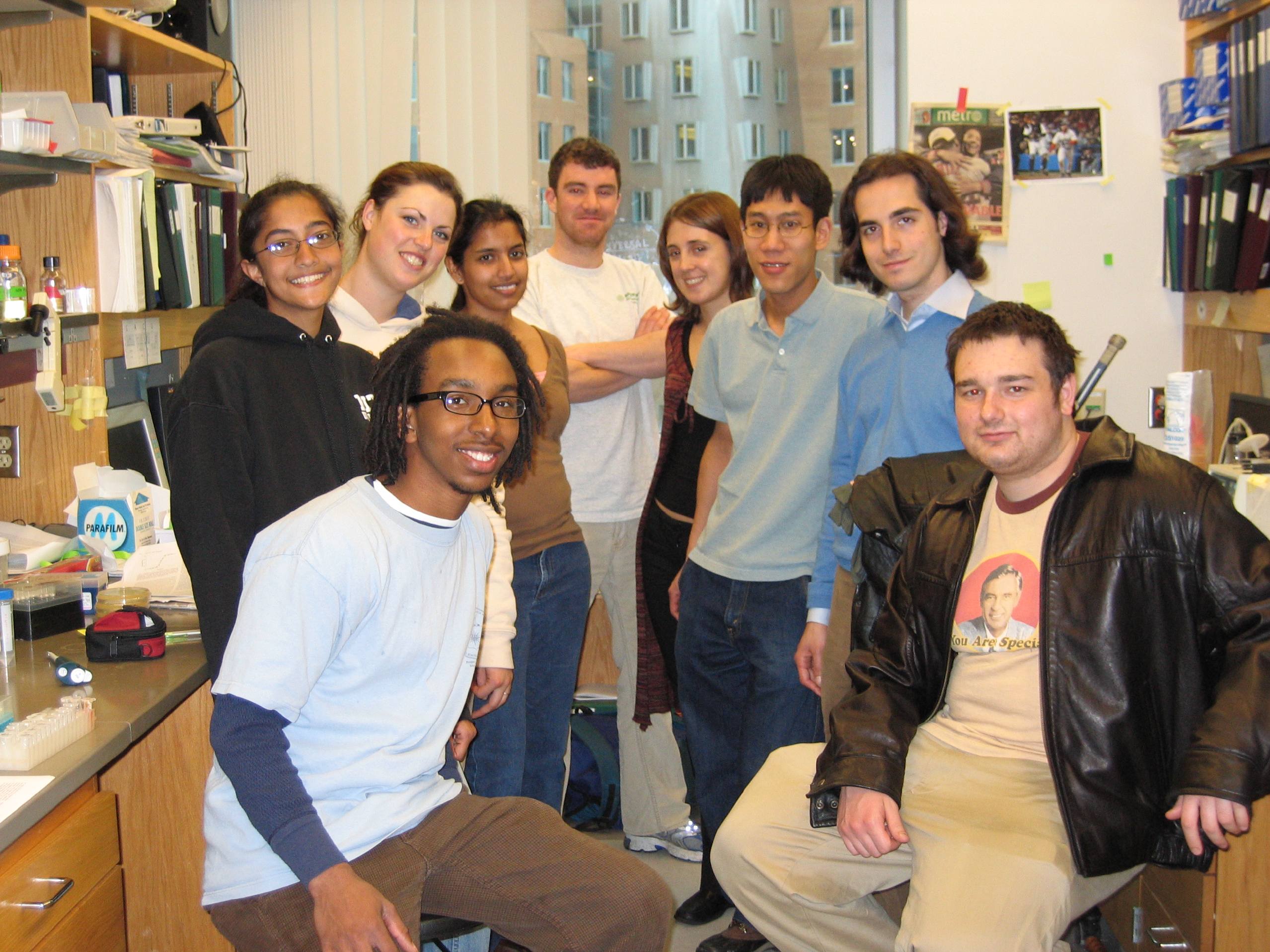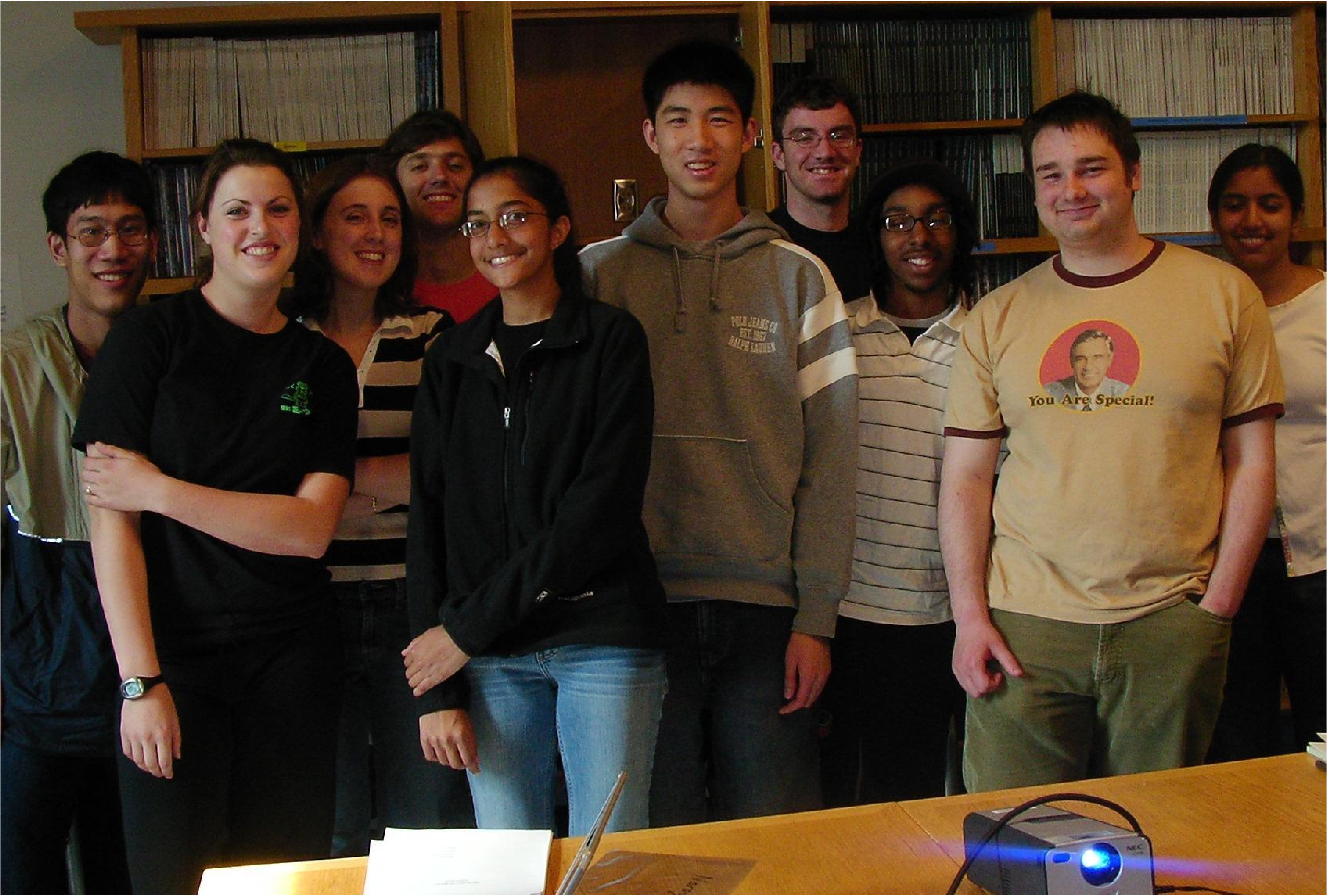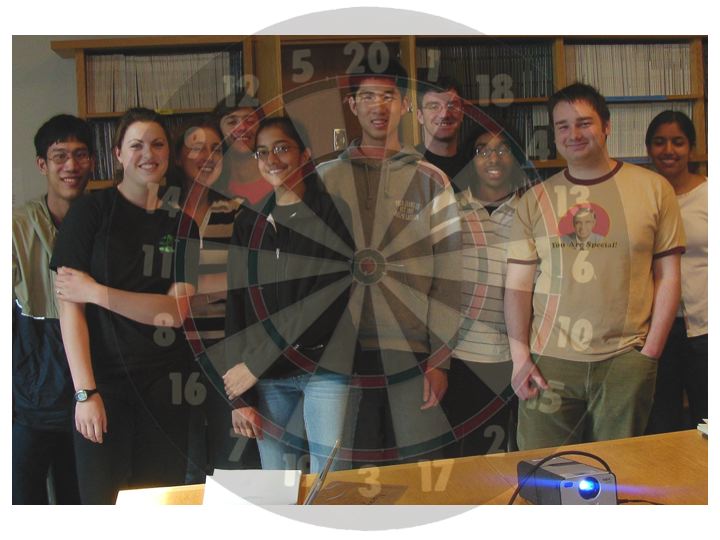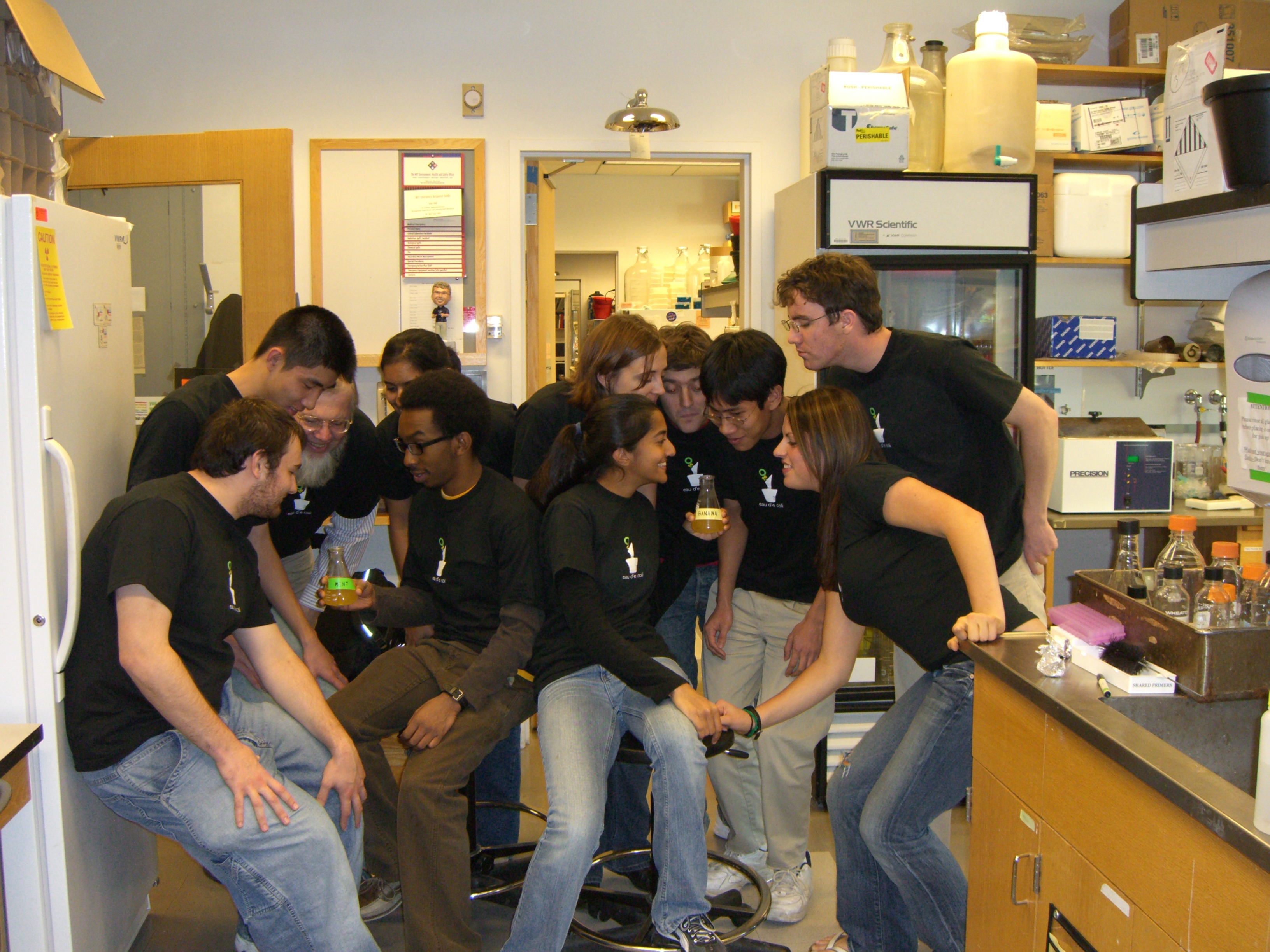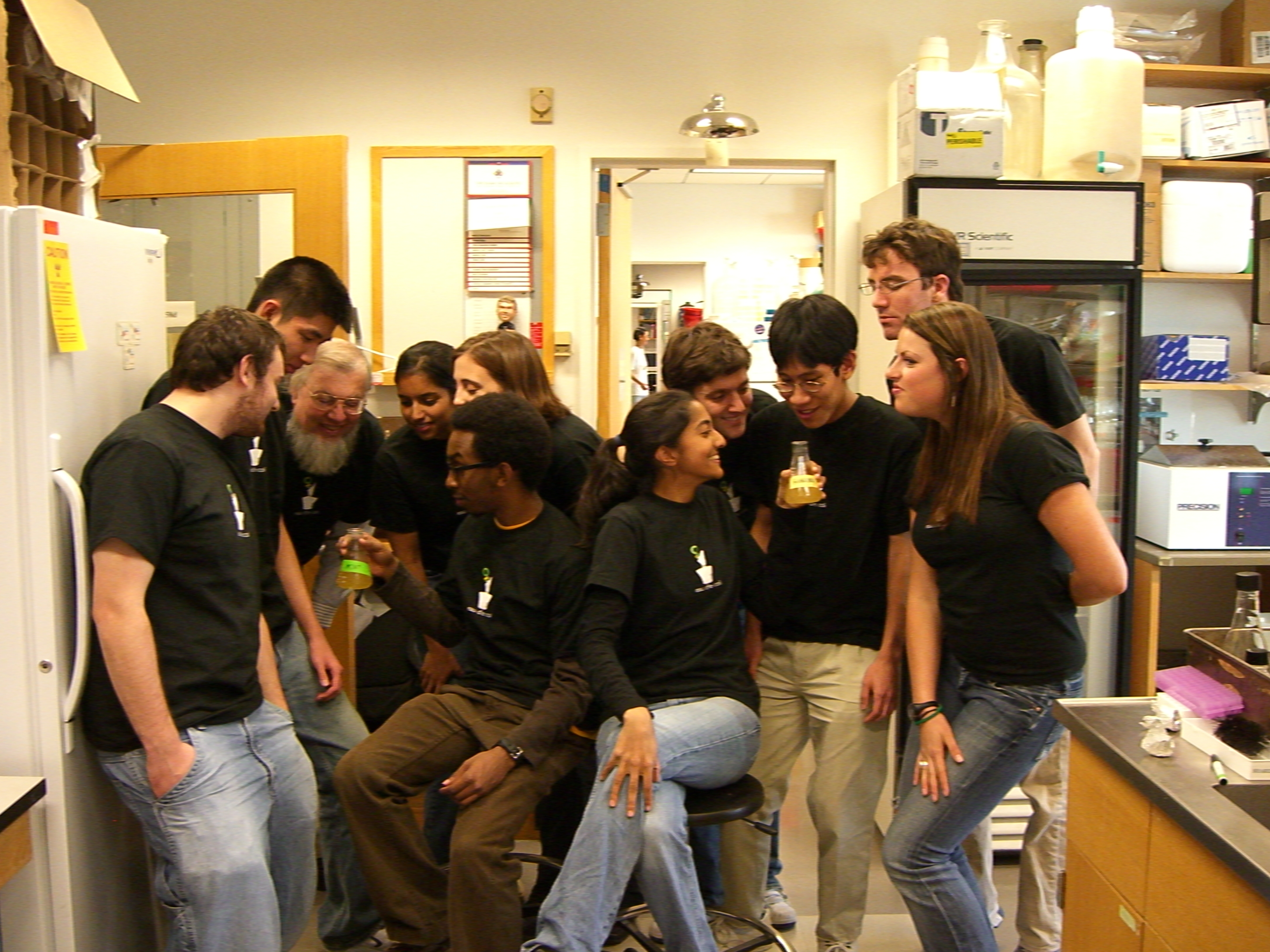MIT 2006
From 2006.igem.org
See our wiki at [http://openwetware.org/wiki/IGEM:MIT/2006 MIT iGEM 2006 at OpenWetWare]. (Far more information available there!)
Contents |
Members
The MIT iGEM team consists of 5 students working fulltime during summer 2006 on engineering a biological system. In addition, we have 5 graduate student advisors and 2 faculty advisors.
Students
- [http://openwetware.org/wiki/User:Skatebro Kate Broadbent]
- [http://openwetware.org/wiki/User:Dagreen Andre Green]
- [http://openwetware.org/wiki/User:Stephen Stephen Payne]
- [http://openwetware.org/wiki/User:Veenav Veena Venkatachalam]
- [http://openwetware.org/wiki/User:Boyuanzhu Boyuan Zhu]
Email us: team AT igem.mit.edu
Advisors
- [http://openwetware.org/wiki/Barry_Canton Barry Canton]
- [http://openwetware.org/wiki/Austin_Che Austin Che]
- [http://openwetware.org/wiki/Drew_Endy Drew Endy]
- [http://openwetware.org/wiki/Jason_Kelly Jason Kelly]
- [http://openwetware.org/wiki/Tom_Knight Tom Knight]
- [http://openwetware.org/wiki/Reshma_Shetty Reshma Shetty]
- [http://openwetware.org/wiki/Samantha_Sutton Samantha Sutton]
Email us: igem AT igem.mit.edu
Project description
This summer, MIT's iGEM 2006 team engineered Escherichia coli to produce a wintergreen scent during exponential phase and a banana scent during stationary phase using only endogenous metabolites. Thus, our project demonstrates that
- It is indeed possible to design, build and test a synthetic biological system over the course of a summer.
- Biosynthetic devices that produce scented compounds can be successfully engineered in E. coli.
- Biosynthetic devices can be purposefully regulated via transcription based control devices.
Motivations
Our project focused on engineering Escherichia coli to produce different compounds that smell fragrant. Since scents can both act as natural reporters and have a diverse array of applications, they represent a promising but thus far unexplored area of synthetic biology.
Future applications of this work that we envision include ...
- Improving the workplace environment for microbiologists working with Escherichia coli since E. coli produce a natural foul scent.
- Porting our system to bacterial species involved in bioremediation.
- Implementing our system in bacteria responsible for bad human odor in the mouth, armpits and feet.
Contributions
Devices
- A biosynthetic device that converts salicylic acid to methyl salicylate (or wintergreen).
- A biosynthetic device that converts isoamyl alcohol to isoamyl acetate (or banana smell).
- A PoPS source that is only active during stationary phase.
- A PoPS source that is only active during exponential phase.
Systems
- Escherichia coli capable of producing a wintergreen scent autonomously (without addition of any precursors).
- E. coli capable of producing a banana scent autonomously (without addition of any precursors).
Future work
coming soon ...
